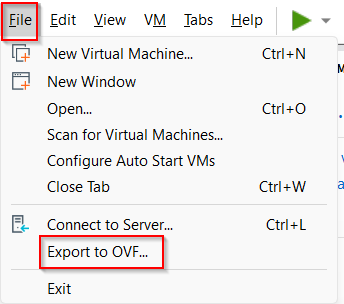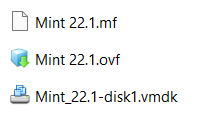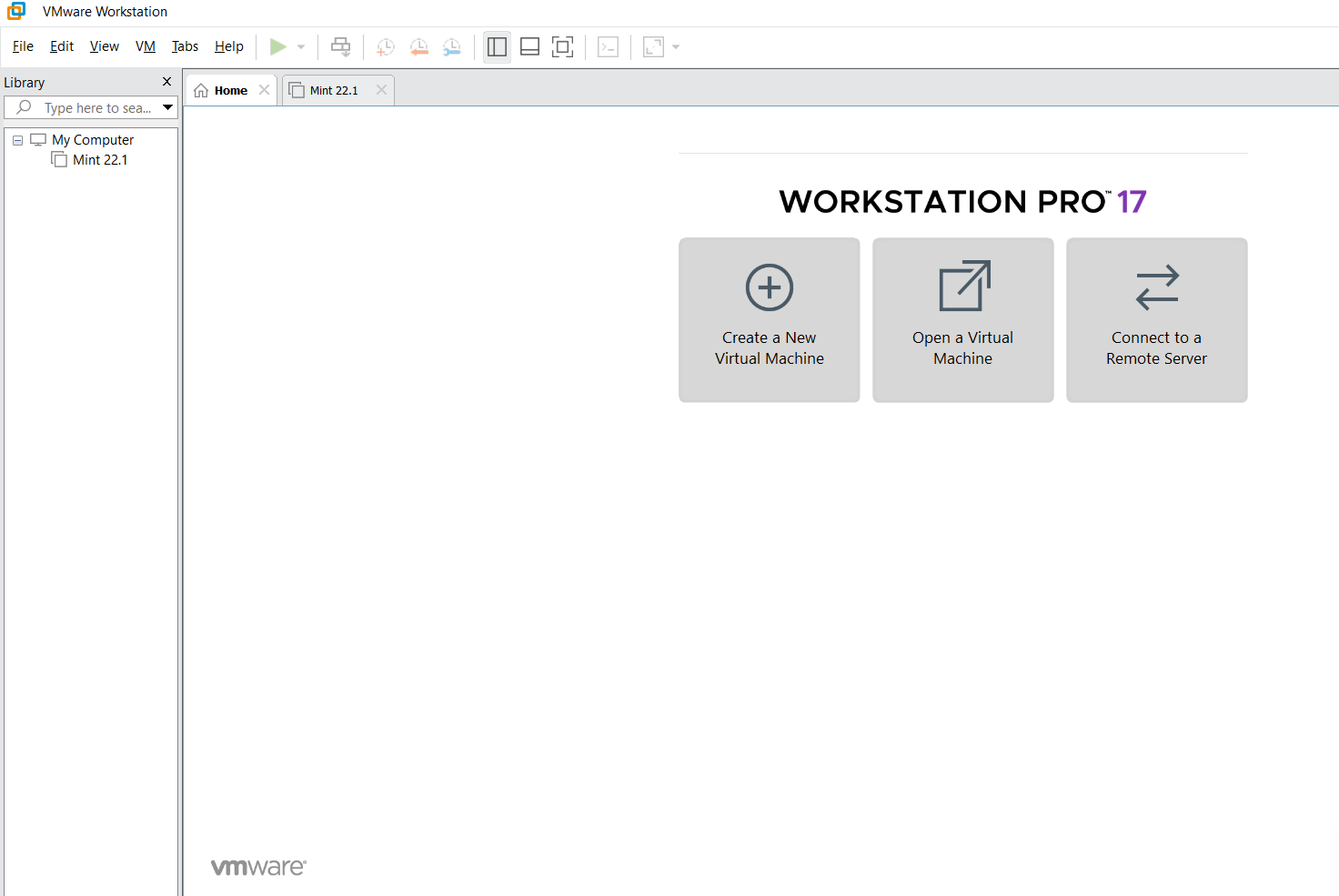If you’re a VMware Workstation user, you can easily export your existing virtual machines to the OVF format. This allows you to share your VMs with between different virtualization software or to archive them in a portable format.
Key Benefits of Using OVF:
- Platform Independence: Deploy VMs across different hypervisors and cloud platforms.
- Simplified Deployment: Standardized packaging streamlines the process of distributing and deploying pre-configured virtual appliances.
- Efficiency: OVF allows for the distribution of ready-to-run software solutions without lengthy installation and configuration processes.
- Extensibility: Vendors can add specific extensions to the OVF descriptor to define more detailed configurations.
- Content Verification: Manifests and certificates help ensure the integrity and authenticity of the distributed virtual machines.
Here’s how to do it:
Open VMware Workstation, select the VM from dashboard and navigate to File > Export to OVF.

You will be prompted to choose the file name and format. Save it as type Open Virtual Machine Format files.

The export process can take some time, depending on the size of your virtual machine and its virtual disks. VMware Workstation will convert the VM’s configuration and disk files into the OVF standard.

The exported files will include an .ovf file and one or more .vmdk (virtual disk) files along with an optional manifest file (.mf).

This OVF package can now be imported into other virtualization programs that support the OVF standard, such as Oracle VirtualBox, XenCenter, or other instances of VMware products.
By leveraging the Open Virtual Machine Format, users and organizations can enjoy greater flexibility in managing and distributing their virtualized environments, breaking down the barriers between different virtualization platforms and fostering a more open and interoperable ecosystem.
All done.
